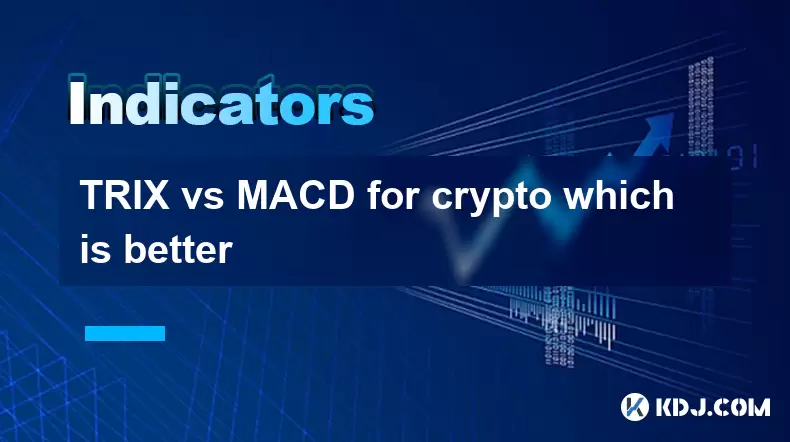-
 Bitcoin
Bitcoin $118,209.3536
1.16% -
 Ethereum
Ethereum $3,151.7546
5.98% -
 XRP
XRP $2.9277
2.35% -
 Tether USDt
Tether USDt $1.0000
0.00% -
 BNB
BNB $689.7099
1.26% -
 Solana
Solana $163.4270
1.91% -
 USDC
USDC $1.0000
0.02% -
 Dogecoin
Dogecoin $0.1983
3.74% -
 TRON
TRON $0.3008
0.51% -
 Cardano
Cardano $0.7435
2.86% -
 Hyperliquid
Hyperliquid $47.6547
-0.48% -
 Stellar
Stellar $0.4625
2.79% -
 Sui
Sui $3.9921
2.71% -
 Chainlink
Chainlink $16.0608
4.23% -
 Hedera
Hedera $0.2348
1.56% -
 Bitcoin Cash
Bitcoin Cash $496.6985
1.25% -
 Avalanche
Avalanche $21.9038
5.41% -
 UNUS SED LEO
UNUS SED LEO $8.8356
-1.88% -
 Shiba Inu
Shiba Inu $0.0...01364
5.31% -
 Toncoin
Toncoin $3.1102
4.35% -
 Litecoin
Litecoin $95.9756
3.59% -
 Polkadot
Polkadot $4.0925
5.78% -
 Monero
Monero $333.7622
-1.44% -
 Uniswap
Uniswap $9.1968
2.25% -
 Bitget Token
Bitget Token $4.6378
6.23% -
 Pepe
Pepe $0.0...01282
6.77% -
 Dai
Dai $1.0002
0.03% -
 Ethena USDe
Ethena USDe $1.0005
0.00% -
 Aave
Aave $329.9143
4.49% -
 Bittensor
Bittensor $441.4995
6.89%
TRIX vs MACD for crypto which is better
TRIX and MACD are both momentum indicators used in crypto trading, but TRIX filters out more noise through triple smoothing, making it better for spotting trend reversals with fewer false signals.
Jul 12, 2025 at 12:56 am

Understanding the Basics of TRIX and MACD Indicators
When analyzing cryptocurrency markets, traders often rely on technical indicators to make informed decisions. TRIX (Triple Exponential Average) and MACD (Moving Average Convergence Divergence) are two widely used tools in this domain. Both aim to identify trends, momentum shifts, and potential reversal points. However, their calculation methods and interpretation differ significantly.
The TRIX indicator is a momentum oscillator that filters out market noise by applying triple exponential smoothing to price data. It measures the rate of change of a triple-smoothed EMA (Exponential Moving Average), which makes it highly sensitive to trend reversals while reducing false signals.
On the other hand, the MACD indicator combines moving averages to reveal changes in momentum. It uses the difference between a 12-period and 26-period EMA, with a 9-period signal line applied for confirmation. While effective in trending environments, MACD can generate lag due to its reliance on standard EMAs.
How TRIX Works in Cryptocurrency Trading
To implement TRIX effectively, one must understand its three core components: the triple-smoothed EMA, the rate of change, and the signal line. Here’s how you can apply it step-by-step:
- Calculate a 14-period EMA of closing prices.
- Apply a second EMA of the same length to the result from the first EMA.
- Perform a third EMA smoothing on the output of the second EMA.
- Compute the percentage rate of change of the triple-smoothed EMA.
- Optionally, add a signal line (e.g., a 9-period EMA of the TRIX values) to confirm crossovers.
In crypto trading, TRIX excels at detecting overbought or oversold conditions when combined with divergences. For example, if Bitcoin’s price is rising but the TRIX line is declining, it may indicate weakening momentum and an imminent pullback.
Applying MACD in Crypto Market Analysis
The MACD is more familiar among novice traders due to its straightforward visual cues. To set up the MACD correctly:
- Plot the 12-period EMA and subtract the 26-period EMA to get the MACD line.
- Create a signal line by applying a 9-period EMA to the MACD line.
- Display the histogram as the difference between the MACD line and the signal line.
In fast-moving crypto markets like Ethereum or Solana, MACD helps spot bullish or bearish momentum through crossovers and histogram expansions. A bullish crossover occurs when the MACD line crosses above the signal line, suggesting buying pressure. Conversely, a bearish crossover happens when the MACD line dips below the signal line.
However, due to the high volatility of cryptocurrencies, MACD may produce delayed signals during sharp corrections or sideways consolidation.
Comparing Signal Sensitivity Between TRIX and MACD
One key distinction lies in signal sensitivity. Since TRIX applies multiple smoothing layers, it tends to filter out short-term fluctuations better than MACD. This results in fewer false signals, especially in choppy crypto markets.
For instance, during a rapid pump-and-dump scenario in altcoins, MACD might give premature buy signals that lead to losses once the momentum collapses. In contrast, TRIX would delay the signal until the trend stabilizes, offering a safer entry point.
Traders who prioritize early entry based on momentum shifts may prefer MACD, whereas those looking for confirmed trend reversals with reduced noise might lean toward TRIX.
Backtesting TRIX and MACD in Real Crypto Scenarios
Before committing capital, backtesting both indicators across various crypto assets is essential. Here's how to approach it systematically:
- Select historical price data for a cryptocurrency like BTC/USDT or ETH/USDT over a 6-month period.
- Overlay both TRIX and MACD on the chart using platforms like TradingView or Binance’s native tools.
- Identify all crossover signals generated by each indicator.
- Compare win rates, drawdowns, and average profit per trade for both strategies.
During volatile periods such as FOMO rallies or regulatory shocks, TRIX often shows superior performance in filtering out fakeouts. However, in strong trending phases, MACD may capture more profitable moves earlier.
It's also worth noting that combining both indicators can yield hybrid strategies. For example, entering a long position only when both TRIX and MACD confirm a bullish cross can increase the probability of success.
Customizing Parameters for Optimal Results
Both TRIX and MACD allow parameter adjustments to suit specific crypto assets or timeframes. Here’s how you can customize them:
- Adjust the TRIX period from the default 14 to lower values like 7 or 9 for faster responsiveness in highly volatile tokens like XRP or DOGE.
- Change the MACD settings from the traditional 12-26-9 to shorter intervals like 8-21-5 for quicker reaction times on intraday charts.
- Use adaptive timeframes where the lookback period adjusts automatically based on market volatility.
Experimenting with these customizations can enhance accuracy depending on whether you're scalping or swing trading. Always ensure your strategy aligns with your risk tolerance and investment horizon.
Frequently Asked Questions
Q: Can I use TRIX and MACD together in crypto trading?
Yes, combining TRIX and MACD can help validate signals and reduce false positives. For instance, waiting for both indicators to show bullish crossovers before entering a long position increases reliability.
Q: Which indicator gives fewer false signals in crypto markets?
Generally, TRIX produces fewer false signals due to its triple smoothing mechanism. It filters out minor price fluctuations better than MACD, making it suitable for noisy crypto environments.
Q: Should I adjust the default settings of TRIX and MACD for crypto trading?
Adjusting parameters can improve performance, especially given the high volatility of cryptocurrencies. Shortening the TRIX period or tweaking MACD settings may help adapt to faster market movements.
Q: Are TRIX and MACD suitable for all types of crypto assets?
While both indicators work well across major cryptocurrencies like Bitcoin and Ethereum, they may perform differently on low-cap or highly speculative altcoins. Testing on individual assets is recommended before live trading.
Disclaimer:info@kdj.com
The information provided is not trading advice. kdj.com does not assume any responsibility for any investments made based on the information provided in this article. Cryptocurrencies are highly volatile and it is highly recommended that you invest with caution after thorough research!
If you believe that the content used on this website infringes your copyright, please contact us immediately (info@kdj.com) and we will delete it promptly.
- Eclipse Airdrop and Token Supply: Navigating the Crypto Landscape
- 2025-07-16 18:50:13
- Solana Price, Zebec Network, and Remittix: Decoding the Crypto Signals
- 2025-07-16 18:30:13
- Crypto Picks & Altcoin Breakout: August's Hottest Trends
- 2025-07-16 18:30:13
- XLM Stellar Analyst Prediction: Is a $10 Target on the Horizon?
- 2025-07-16 19:10:12
- Dubai, Ripple, and Tokenization: A New Era for Real Estate
- 2025-07-16 18:50:13
- Unilabs Finance (UNIL): Primed for a Massive 2025 Launch?
- 2025-07-16 19:15:12
Related knowledge

Advanced RSI strategies for crypto
Jul 13,2025 at 11:01am
Understanding the Basics of RSI in Cryptocurrency TradingThe Relative Strength Index (RSI) is a momentum oscillator used to measure the speed and chan...

Crypto RSI for day trading
Jul 12,2025 at 11:14am
Understanding RSI in the Context of Cryptocurrency TradingThe Relative Strength Index (RSI) is a momentum oscillator used to measure the speed and cha...

Crypto RSI for scalping
Jul 12,2025 at 11:00pm
Understanding RSI in the Context of Crypto TradingThe Relative Strength Index (RSI) is a momentum oscillator widely used by traders to measure the spe...

What does an RSI of 30 mean in crypto
Jul 15,2025 at 07:07pm
Understanding RSI in Cryptocurrency TradingRelative Strength Index (RSI) is a momentum oscillator widely used in cryptocurrency trading to measure the...

What does an RSI of 70 mean in crypto
Jul 13,2025 at 06:07pm
Understanding the RSI Indicator in Cryptocurrency TradingThe Relative Strength Index (RSI) is a widely used technical analysis tool that helps traders...

Does RSI work in a bear market for crypto
Jul 16,2025 at 01:36pm
Understanding RSI in Cryptocurrency TradingThe Relative Strength Index (RSI) is a momentum oscillator used by traders to measure the speed and change ...

Advanced RSI strategies for crypto
Jul 13,2025 at 11:01am
Understanding the Basics of RSI in Cryptocurrency TradingThe Relative Strength Index (RSI) is a momentum oscillator used to measure the speed and chan...

Crypto RSI for day trading
Jul 12,2025 at 11:14am
Understanding RSI in the Context of Cryptocurrency TradingThe Relative Strength Index (RSI) is a momentum oscillator used to measure the speed and cha...

Crypto RSI for scalping
Jul 12,2025 at 11:00pm
Understanding RSI in the Context of Crypto TradingThe Relative Strength Index (RSI) is a momentum oscillator widely used by traders to measure the spe...

What does an RSI of 30 mean in crypto
Jul 15,2025 at 07:07pm
Understanding RSI in Cryptocurrency TradingRelative Strength Index (RSI) is a momentum oscillator widely used in cryptocurrency trading to measure the...

What does an RSI of 70 mean in crypto
Jul 13,2025 at 06:07pm
Understanding the RSI Indicator in Cryptocurrency TradingThe Relative Strength Index (RSI) is a widely used technical analysis tool that helps traders...

Does RSI work in a bear market for crypto
Jul 16,2025 at 01:36pm
Understanding RSI in Cryptocurrency TradingThe Relative Strength Index (RSI) is a momentum oscillator used by traders to measure the speed and change ...
See all articles

























































































